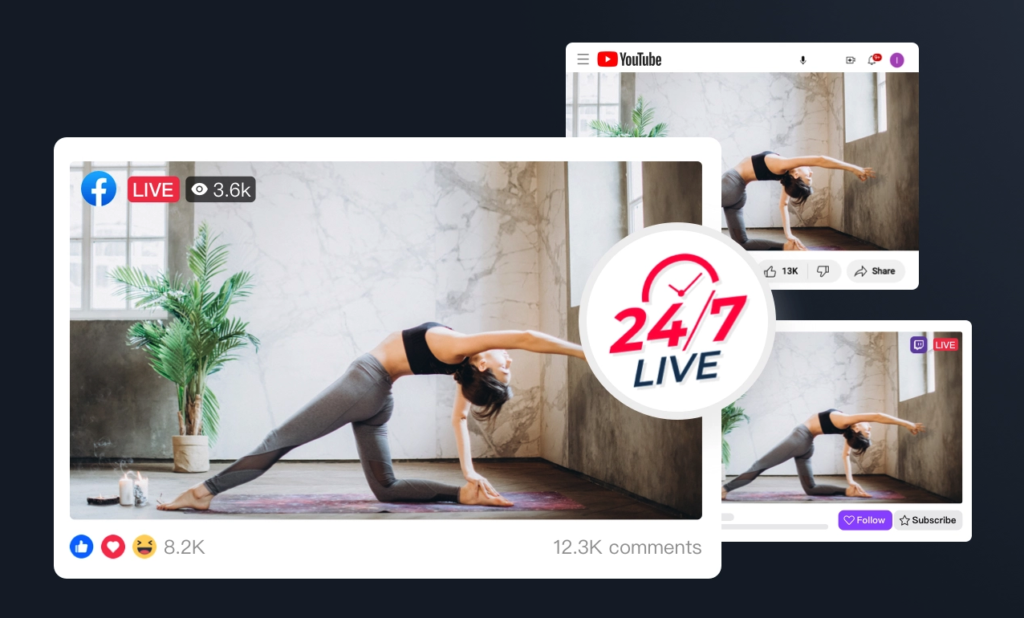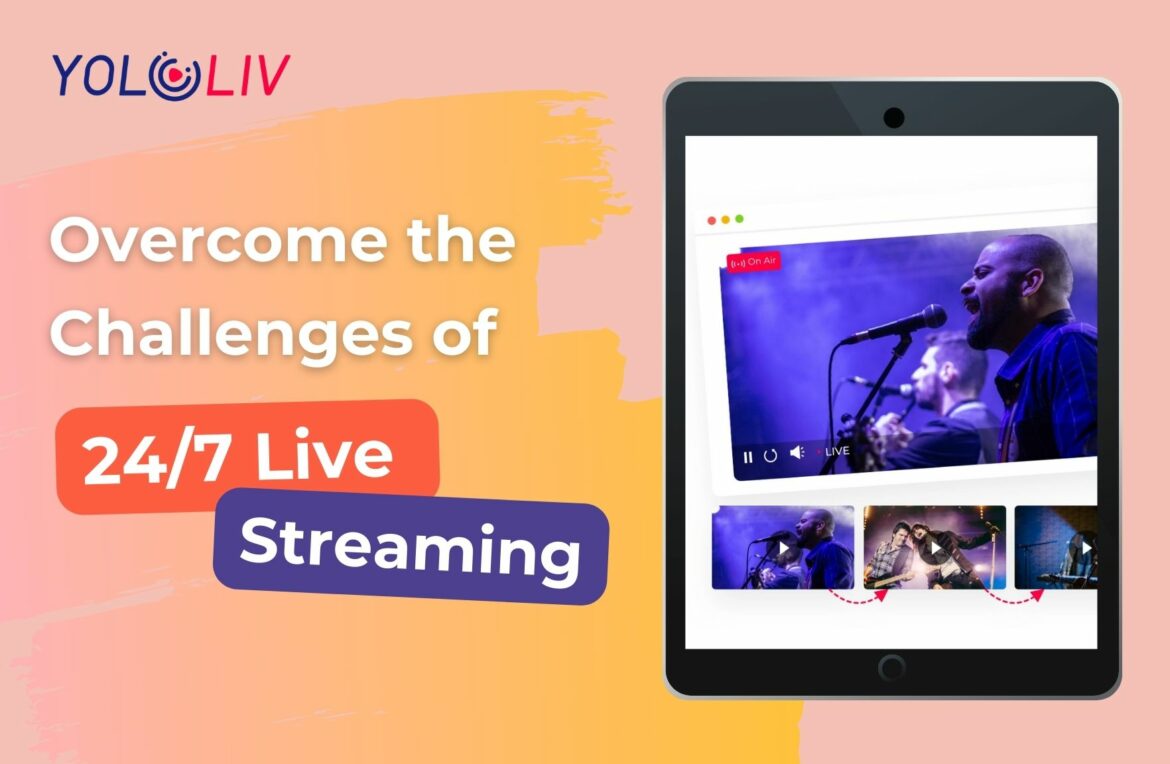24/7 live streaming has become a key part of our daily lives. It is now common to see everything from news updates to gaming streams that run all day. This constant flow of content fits well with our need for uninterrupted media. However, while 24/7 live streaming offers many benefits, it also comes with several challenges. These challenges affect both content creators and viewers. In this blog, we will explore these issues and discuss practical solutions for overcoming them.
What is 24/7 Live Streaming?
24/7 live streaming is the real-time continuous broadcast of video content, running all day, every day. It is similar to a TV channel, but online and without limits based on location. As long as you have a good internet connection, you can reach people anywhere in the world, no matter the time zone. This makes it a strong tool for creators, businesses, and educators to connect with a global audience in a special way.
Importance of 24/7 Live Streaming
The significance of 24/7 live streaming in today’s digital environment cannot be overstated. It’s not just about continuous content availability; it’s also about creating an ever-present virtual space where communities can thrive. It’s where gamers can conquer new levels together, learners can dive into exhaustive educational resources, and where businesses can provide customer service in real-time. It fosters connectivity, instant feedback, and community-building that far surpass traditional content delivery methods.
However, as exciting as round-the-clock live streaming sounds, it comes with its set of challenges, which can be categorized into four broad areas:
Technical Difficulties
Content Creation
Audience Engagement
Copyright Issues
Overcoming Technical Difficulties
Any technical hiccup, be it small or large, can disrupt your live stream, negatively affecting the viewer experience and potentially leading to a loss in viewership. Here’s how you can navigate through these potential roadblocks:
Quality Equipment and Infrastructure: Investing in top-notch equipment, like cameras and microphones, and reliable broadcasting software can make a world of difference to your live streaming experience. It not only enhances video and audio quality but also ensures smoother transitions and special effects, if any.
Reliable Internet Connection: Your internet connection is the lifeline of your live stream. Any instability can lead to buffering or disconnection, frustrating your viewers. Always opt for a high-speed, stable internet connection and ensure you have sufficient bandwidth for the stream’s quality.
Backup Plans: As Murphy’s Law states, “Anything that can go wrong, will go wrong.” Hence, having contingency plans in place, like backup equipment or an alternative streaming solution, can save the day during technical crises.
Mastering Content Creation
Consistently creating engaging content for a 24/7 live stream can be a daunting task. Here are some tips:
Planning and Scheduling: Planning is crucial. Design a content schedule detailing what, when, and how you’ll be streaming. This helps organize your streams and keeps your audience informed about what to expect and when.
Diversity in Content: Too much of the same can bore your audience. Create different types of content, cater to various interests, and experiment with formats to keep your audience intrigued.
Regular Updates: Keep your content fresh and updated. Bring in current trends, latest news, or viral themes to maintain relevancy.
Keeping Your Audience Engaged
Maintaining high levels of audience engagement throughout your live stream can be a balancing act. Here’s how to achieve it:
Interactive Elements: Incorporate interactive segments in your streams, such as Q&A sessions, live chats, polls, or competitions. This encourages viewer participation and keeps them involved.
Consistent Communication: Regularly communicate with your audience, not just during the live streams but also through social media platforms and community forums.
Feedback Mechanism: Ask for feedback and make your audience feel heard. This not only helps improve your content but also makes your viewers feel valued, promoting loyalty.

Respecting Copyright Laws
Understanding and respecting copyright laws is critical in live streaming:
Understanding Copyright Laws: Acquaint yourself with the basics of copyright laws related to live streaming. When in doubt, consult a legal expert.
Content Ownership: Prioritize the use of original content.
Licensing and Permissions: If using copyrighted content, obtain the necessary licenses or permissions.
Conclusion
24/7 live streaming does come with its own set of challenges. These challenges may seem tough at first, but with the right strategies, proper equipment, engaging content, and a clear understanding of copyright laws, they can be overcome. The most important thing is to always keep your audience in mind. By focusing on their needs and providing value, you can build a strong connection. Remember, in the world of live streaming, your audience is the most important part of the experience. Keeping them engaged and satisfied will lead to success.
11,313 total views, 27 views today

Hazel, the Marketing Specialist at yoloLiv. As an avid live-streaming enthusiast, She has dedicated countless hours to studying and immersing herself in this field. Her goal is to provide you with informative and engaging content that adds value to your streaming-related journey.


